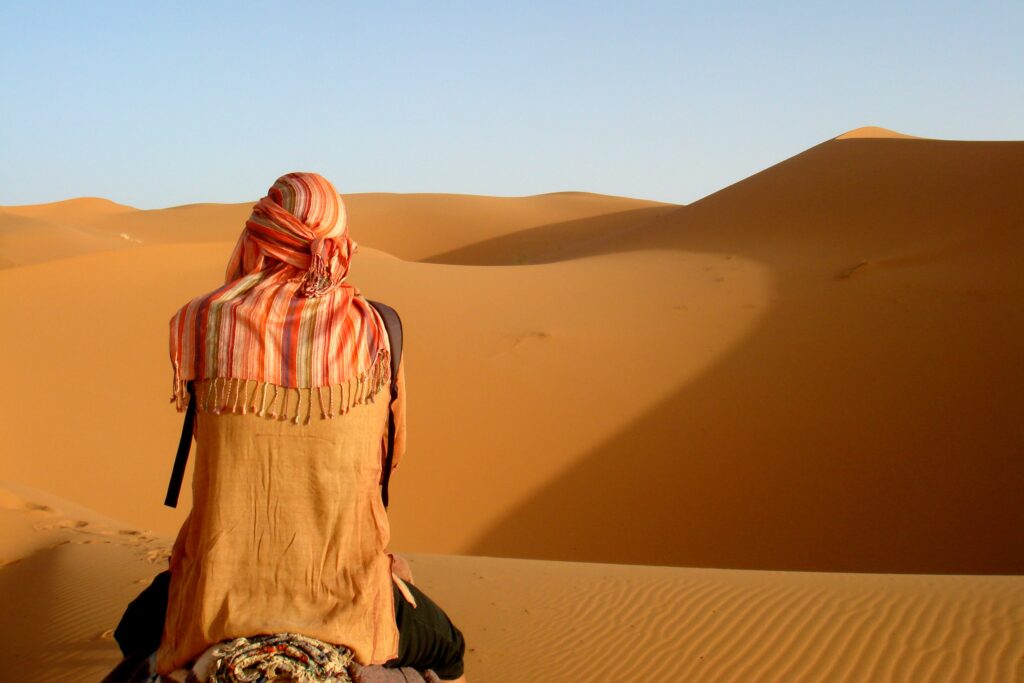 Unveiling Nature’s Furnace: Discover the Secrets Behind the Sizzling Heat and Unearthly Landscapes of the World’s Hottest Deserts!
Unveiling Nature’s Furnace: Discover the Secrets Behind the Sizzling Heat and Unearthly Landscapes of the World’s Hottest Deserts!
Welcome to a world of extremes, where the sun’s fiery embrace blazes across vast, unforgiving landscapes.
Explore the hottest desert places on Earth, where temperatures soar well above 110 degrees Fahrenheit (43 degrees Celsius) and the scorching air seems to dance with mirages on the horizon. From the towering dunes of Death Valley in the United States to the otherworldly salt flats of Iran’s Dasht-e Lut, these desolate regions bear witness to nature’s most relentless forces.
There are several desert places worldwide where temperatures can exceed 110 degrees Fahrenheit (43 degrees Celsius) during certain times of the year:
- Death Valley, USA: In California, Death Valley is one of the hottest places on Earth. It holds the record for the highest air temperature ever recorded on the planet, reaching 134 degrees Fahrenheit (56.7 degrees Celsius) in 1913. The extreme heat is due to its low elevation (around 282 feet below sea level) and the surrounding mountains that trap the hot air, creating a natural oven effect.
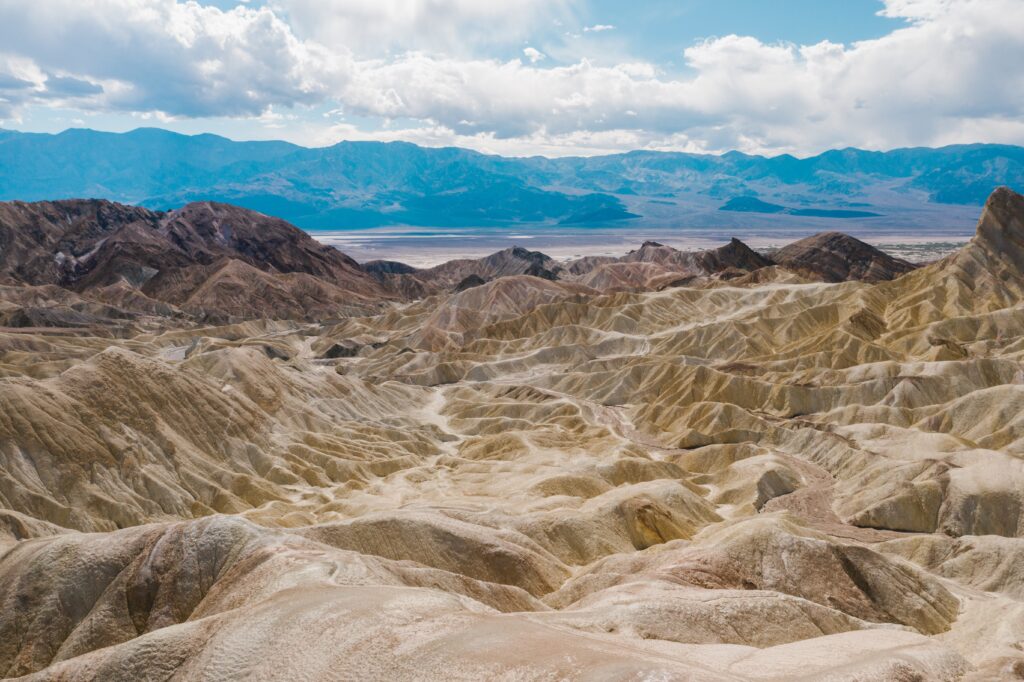
- Dasht-e Lut, Iran: This vast salt sands in southeastern Iran is known for its extreme heat. It holds the record for the highest surface temperature ever recorded, reaching 159.3 degrees Fahrenheit (70.7 degrees Celsius) in 2005. The high temperatures are caused by the low humidity, lack of vegetation, and the intense solar radiation absorbed by the desert’s dark-colored sand and rocks.

- Sahara Desert, Africa: The Sahara is the world’s largest hot and unforgiving places in the world, spanning several countries in North Africa. Temperatures can easily surpass 110 degrees Fahrenheit (43 degrees Celsius) during summer. The heat results from its vast size, lack of vegetation to provide shade, and the sand’s ability to absorb and retain heat from the sun.
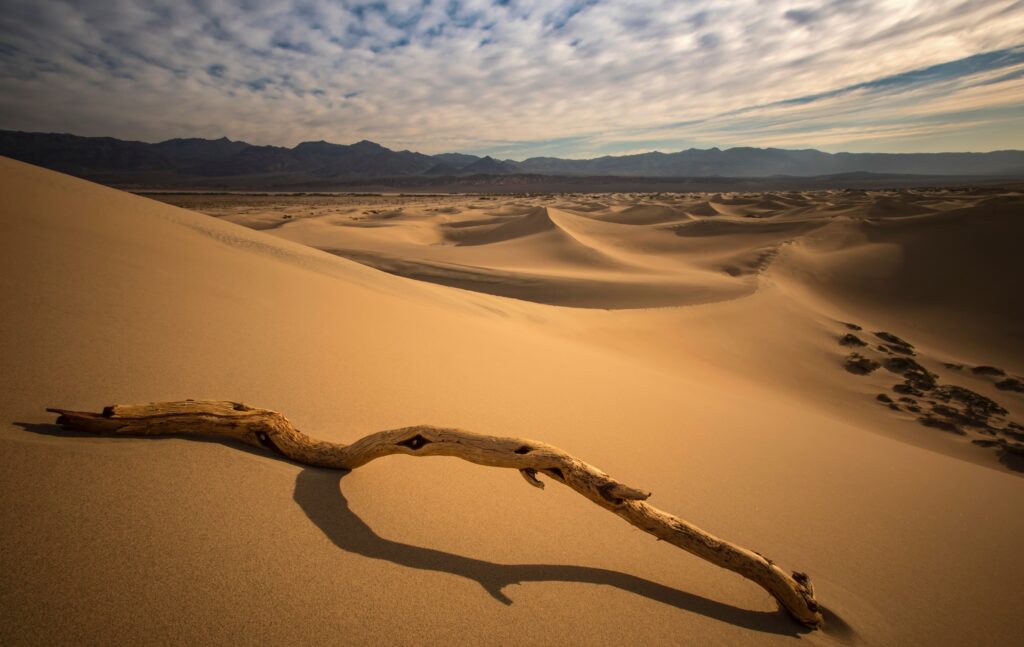
- Dasht-e Kavir (Great Salt Desert), Iran: Another scorching desert in Iran, Dasht-e Kavir, is characterized by salt flats, dunes, and vast plains. Its extreme heat is due to the high solar radiation, low humidity, and lack of water bodies to moderate temperatures.

- Sonoran Desert, USA, and Mexico: This unforgiving place stretches across parts of the southwestern United States and northwestern Mexico. It can experience temperatures exceeding 110 degrees Fahrenheit (43 degrees Celsius) during the peak of summer. The intense heat is attributed to the region’s low elevation and arid climate, and position within the subtropical high-pressure system.

- Sahara el Beyda, Libya: Also known as the “White Desert,” this desert in Libya experiences extreme heat, with temperatures surpassing 110 degrees Fahrenheit (43 degrees Celsius) in the summer. The desert’s light-colored chalk and limestone formations reflect sunlight, contributing to the intense heat.
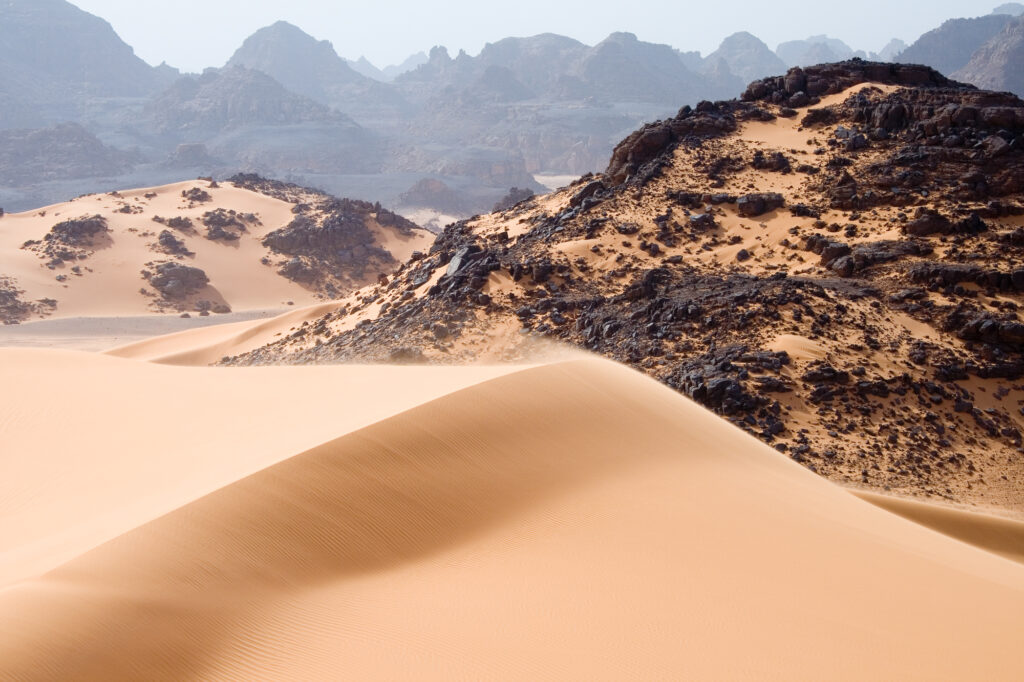
- Kebili, Tunisia: Located in southern Tunisia, Kebili is another hot desert region. The high temperatures result from its arid climate, limited vegetation, and proximity to the Sahara Desert.

- Atacama Desert, Chile: The Atacama is located in northern Chile and is one of the driest places on Earth. It experiences high temperatures, often exceeding 110 degrees Fahrenheit (43 degrees Celsius) during summer. Its extreme heat is due to its geographical location, which is influenced by a combination of factors, including the cold Humboldt Current offshore and the Andes Mountains blocking moisture from the Amazon Basin.
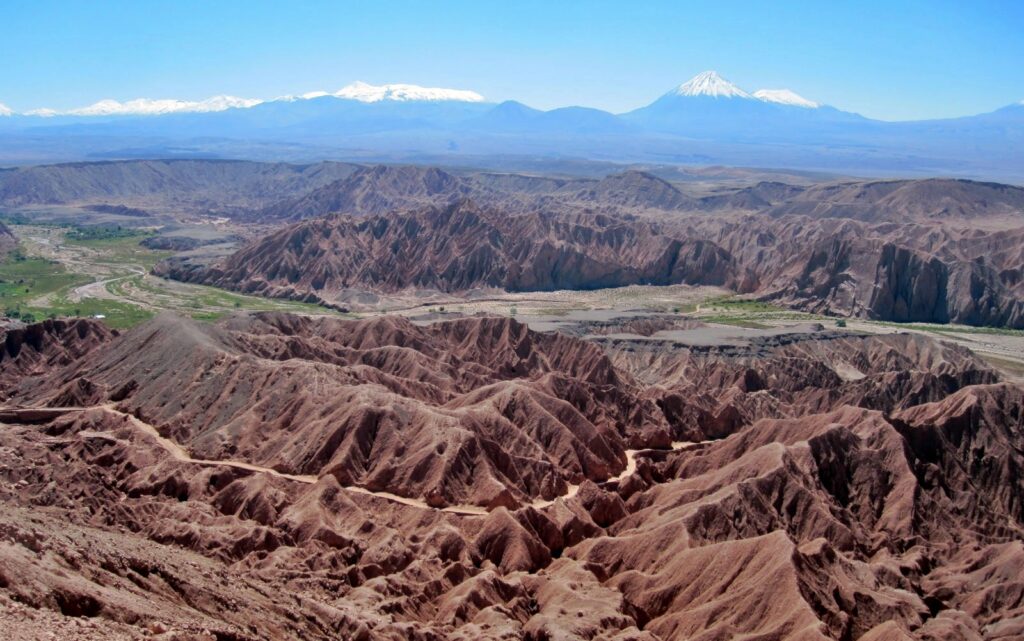
TIP: Visiting such hot places can be extremely challenging and potentially dangerous. If you plan to visit, take necessary precautions, stay hydrated, and avoid outdoor activities during the hottest parts of the day. Being well-prepared and informed about the local weather conditions is also essential before your trip.
Did you know?
The Atacama Desert is known for its extreme heat and dryness and its striking resemblance to the surface of Mars. NASA has used this desolate place as a testing ground for Mars rovers and equipment because the arid conditions, lack of vegetation, and high-altitude terrain closely resemble the Martian landscape.
The Atacama’s Mars-like qualities make it an ideal location for scientists to simulate and study the conditions that future Mars missions may encounter. It’s a unique connection between our planet’s extreme environments and exploring distant worlds!
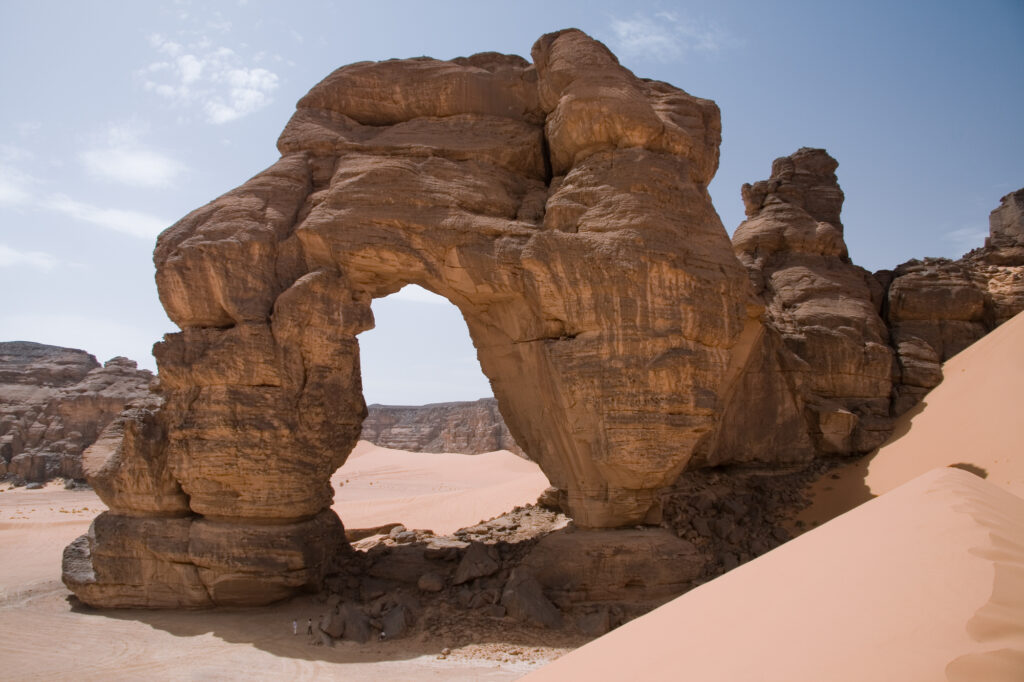 A little history:
A little history:
- Early Human Migration: Deserts have been both barriers and corridors for human migration. Early human populations had to navigate these harsh landscapes throughout history to seek new territories, resources, and refuge. The movement of ancient civilizations across unwelcoming lands, such as the Sahara in Africa or the Gobi in Asia, has contributed to the exchange of cultures, ideas, and technologies.
- Trade Routes: Some of the world’s most famous trade routes passed through barren lands. The Silk Road, for example, connected the East and West, facilitating the exchange of goods, technologies, and cultural practices between Asia, the Middle East, and Europe. Caravans traversed places like the Taklamakan and Arabian deserts, establishing vibrant trading centers.

- Sand Empires: Several powerful empires emerged in and around these sandy locations due to their strategic locations and control over valuable oases and trade routes. The ancient Egyptians along the Nile, the Mesopotamian civilizations between the Tigris and Euphrates rivers, and the Indus Valley Civilization are some examples of desert-associated empires that thrived due to their access to water and fertile lands.
- Nomadic Cultures: Many of these regions were inhabited by nomadic peoples who relied on their deep knowledge of the land to survive. These nomadic cultures developed unique ways of life, adapting to the challenges of extreme living. They moved with their herds in search of grazing land and water sources, leaving minimal environmental impact.
- Religion and Spirituality: They have often been places of spiritual significance in various religions. In Christianity, the Judean Desert in the Holy Land is the site of Jesus’ temptation. The Sinai, also in the Holy Land, is where Moses is believed to have received the Ten Commandments. In Islam, the Arabian Desert is the birthplace of the religion, and Mecca and Medina are two of the holiest cities.
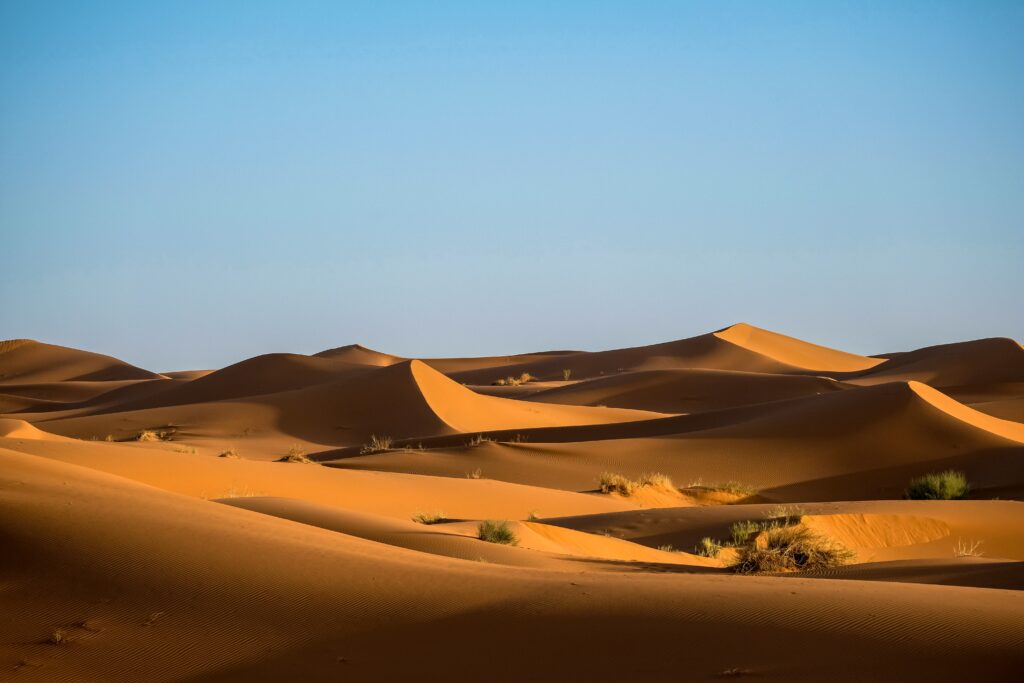
- Modern Exploration and Scientific Research: These extreme places continue to attract explorers and scientists interested in studying extreme environments. From early expeditions seeking lost civilizations to modern-day researchers studying unique flora, fauna, and geological formations, these regions have provided valuable insights into the planet’s past and future.
- Desertification: The expansion of hot sandy locales is due to human activities and climate change has become a significant environmental concern–threatens fertile lands, natural habitats, and livelihoods, leading to social, economic, and ecological challenges for affected communities.


